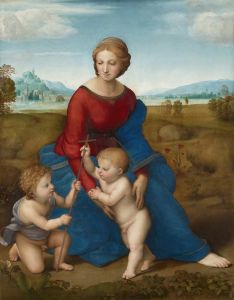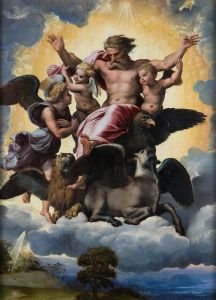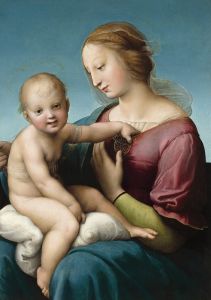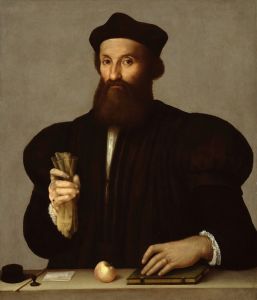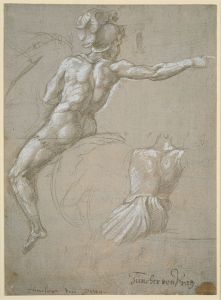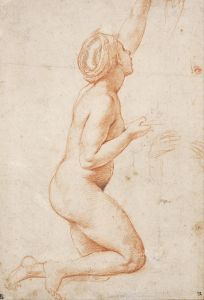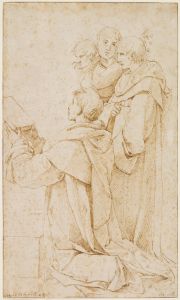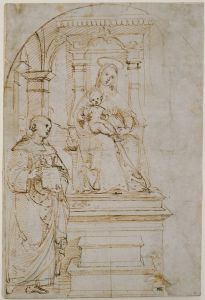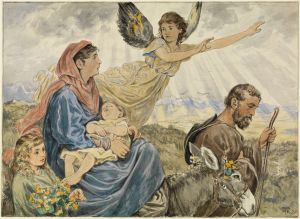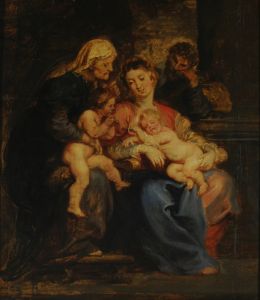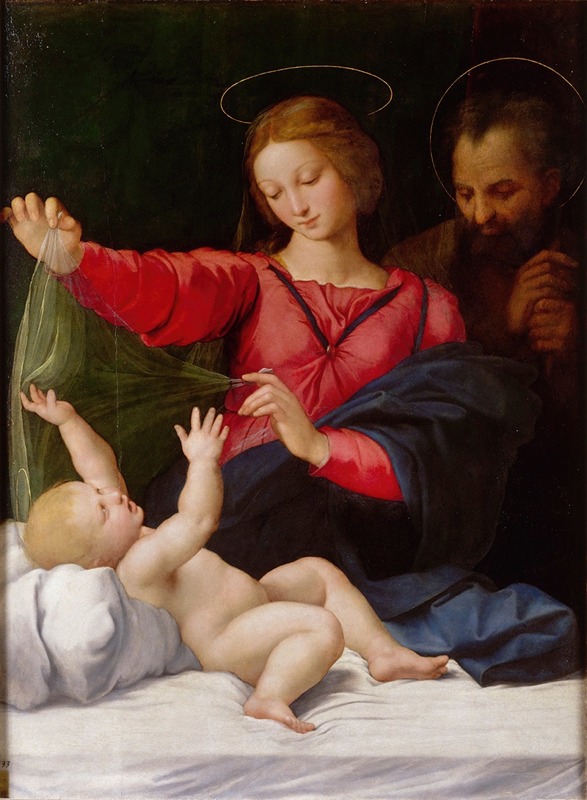
La Madone De Lorette
A hand-painted replica of Raphael’s masterpiece La Madone De Lorette, meticulously crafted by professional artists to capture the true essence of the original. Each piece is created with museum-quality canvas and rare mineral pigments, carefully painted by experienced artists with delicate brushstrokes and rich, layered colors to perfectly recreate the texture of the original artwork. Unlike machine-printed reproductions, this hand-painted version brings the painting to life, infused with the artist’s emotions and skill in every stroke. Whether for personal collection or home decoration, it instantly elevates the artistic atmosphere of any space.
"La Madone de Lorette" (The Madonna of Loreto) is a painting traditionally attributed to the Italian High Renaissance master Raphael. The artwork is believed to have been created around 1509–1510, during Raphael's time in Rome. It depicts the Virgin Mary holding the Christ Child, with Saint Joseph standing in the background. The composition is intimate and tender, reflecting Raphael's skill in portraying human emotion and divine grace.
The painting is named after the Sanctuary of Loreto, a significant pilgrimage site in Italy, although its direct connection to the sanctuary remains unclear. The title "Madonna of Loreto" was assigned later, and there is no definitive evidence linking the painting to the site during Raphael's lifetime.
The artwork is an oil on canvas and is currently housed in the Musée Condé in Chantilly, France. It is considered one of Raphael's smaller devotional works, designed for private worship rather than public display. The painting's dimensions and format suggest it was intended for a domestic or chapel setting.
"La Madone de Lorette" is notable for its serene and balanced composition, hallmarks of Raphael's style. The Virgin Mary is depicted in a three-quarter view, gazing lovingly at the Christ Child, who leans toward her. Saint Joseph, positioned in the background, adds depth to the scene while maintaining a sense of familial intimacy. The figures are set against a neutral background, emphasizing their spiritual significance.
The attribution of the painting to Raphael has been a subject of scholarly debate. While many art historians accept it as an authentic work by Raphael, others have suggested it may have been executed by one of his pupils or collaborators in his workshop. Raphael often worked with a team of assistants, and it was common for his studio to produce works under his supervision.
The painting has undergone restoration and cleaning over the centuries, which has affected its condition and appearance. Despite this, it remains an important example of Raphael's influence on Renaissance art and his ability to convey profound religious themes with simplicity and elegance.
"La Madone de Lorette" continues to be admired for its beauty and artistic significance, reflecting Raphael's mastery of composition, color, and emotional expression. It is a testament to his enduring legacy as one of the greatest painters of the Italian Renaissance.





